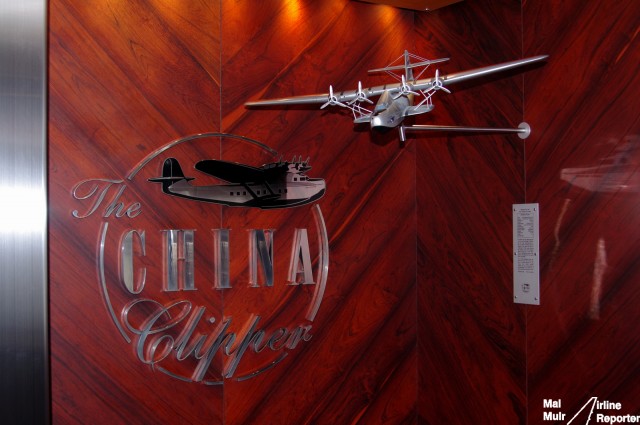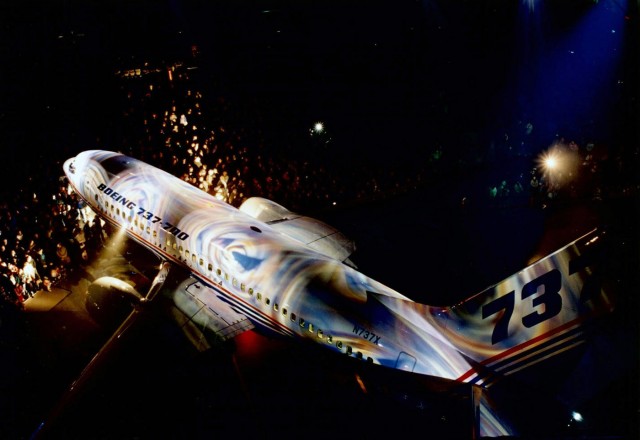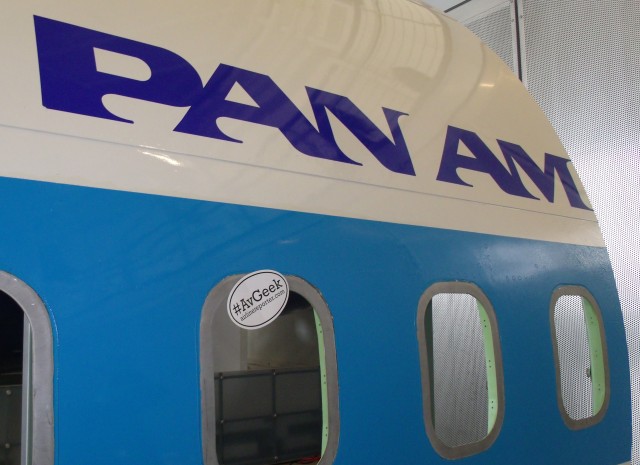What is an AvGeek? Well, since you are reading this, the chances are high that you might be an AvGeek. Is that a good or bad thing? Oh, have no worry, it is a very good thing and you are among great company.
It is hard to really know when or where the #AvGeek idea came from. It took off (pun intended) via social media and derives from “Aviation Geek.” Some folks might take offense to being called a “geek” but in this case, it is a way for people who are fans of aviation to easily identify themselves.
You do not need to be a pilot, you do not need to work in the aviation business, heck you could even be afraid to fly and still be an AvGeek. An AvGeek is someone who is passionate about aviation and that passion can be shown in countless ways.

The China Clipper Lounge Logo and a replica Martin MB-130 Flying Boat – Photo: Mal Muir | AirlineReporter.com
In 1928 the Kadoorie family opened the Peninsula Hong Kong at a time when the skies were dominated by flying boats. Qantas, BOAC & Imperial Airways all flew the Empire Flying Boats, however it was Pan American Airways System (what Pan Am was originally known as) who pioneered the use of flying boats with their Clippers.
The first flying boat for Pan Am was the ’œChina Clipper’ and it flew its first commercial flight from San Francisco to Manila in the Philippines. In 1936 the first Clipper (named Philippine Clipper) touched down in Victoria Harbor just off Kai Tak with Juan Trippe, President of Pan American, on-board. That night as Juan Trippe stayed as a guest at the Peninsula, little would he know that 58 years later (1994) a tribute to the very aircraft he arrived on, would open in that same hotel.
In the darkness of night, the first Boeing 787-9 Dreamliner rolled out of the factory in Everett, WA yesterday. Although the 787-9 will first sport a Boeing livery during testing, it will soon be painted into one of two of Air New Zealand’s new liveries, since they will later take delivery of the aircraft.
Final judgement might have to wait until the new 787-9 is fully painted [and seen in light], but it already appears the dash nine might look more beautiful than the dash eight.
SEE SEVEN PHOTOS OF THE FIRST BOEING 787-9 ROLLING OUT OF THE FACTORY via the Seattle PI and taken by Jeremy Dwyer-Lindgren.
Big thanks to Liz Matzelle for letting us use her 787-9 video!

A Close up look at the new Scimitar Winglet – Photo: United Airlines
On Tuesday the 16th July 2013, a new type of winglet took to the skies for the first time. Forget about the blended winglet or even the sharklet, the new kid in town is the Scimitar Winglet. This new winglet is similar to the Advance Technology Winglet that is destined for Boeing’s new 737 Max aircraft, but is built for the 737NG instead.
The first flight was operated by a United 737-800 (aircraft N37277) and was conducted at Paine Field (KPAE) in Everett. Many of the test flights out of KPAE are operated by Boeing at the north-end of the airport, but this flight was completed at the south-end via Aviation Partners Boeing where the aircraft was retrofitted with the new Scimitar Winglet.

On December 2, 1996: The first 737NG, a 737-700, rolls out of the Renton factory to all splashy event. Image courtesy: Boeing
This story was written by Chris Sloan and originally was published on Airchive.com. This is the next of a multi-part series talking about the Boeing 737 factory in Renton. Read the first part: A Historical Look at Boeing’s 737 Factory in Renton.
Success Breeds Competition: The Airbus A320 ups the ante and Boeing is forced to answer
In 1988, the first serious competitor to the 737 monopoly, the Airbus A320 entered service. With even more advanced systems like fly-by-wire flight controls, new higher powered and fuel efficient engines, a wider cabin, the first major use of composite materials in a narrow body airliner, and somewhat larger capacity on a direct model comparison basis, the A320 family quickly became a force to be reckoned with. In addition, Airbus offered aggressive pricing and quicker delivery windows. Having only recently launched the 2nd generation 737s, Boeing didn’t respond to the European framer’s challenge for another 5 years.
In 1993, Boeing finally answered with the Boeing 737 Next Generation. First flying in 1997, it first entered service in 1998 as a 737-700 (comparable in size to the 737-300) for launch customer Southwest. While retaining commonality with the 2nd generation 737s, the NextGens included a redesigned wing, and eventually winglets, that increased total fuel capacity by 30% and range to over 3,000 miles. Quieter, more powerful and more fuel-efficient engines in the form of CFM56-7Bs came online as well.



